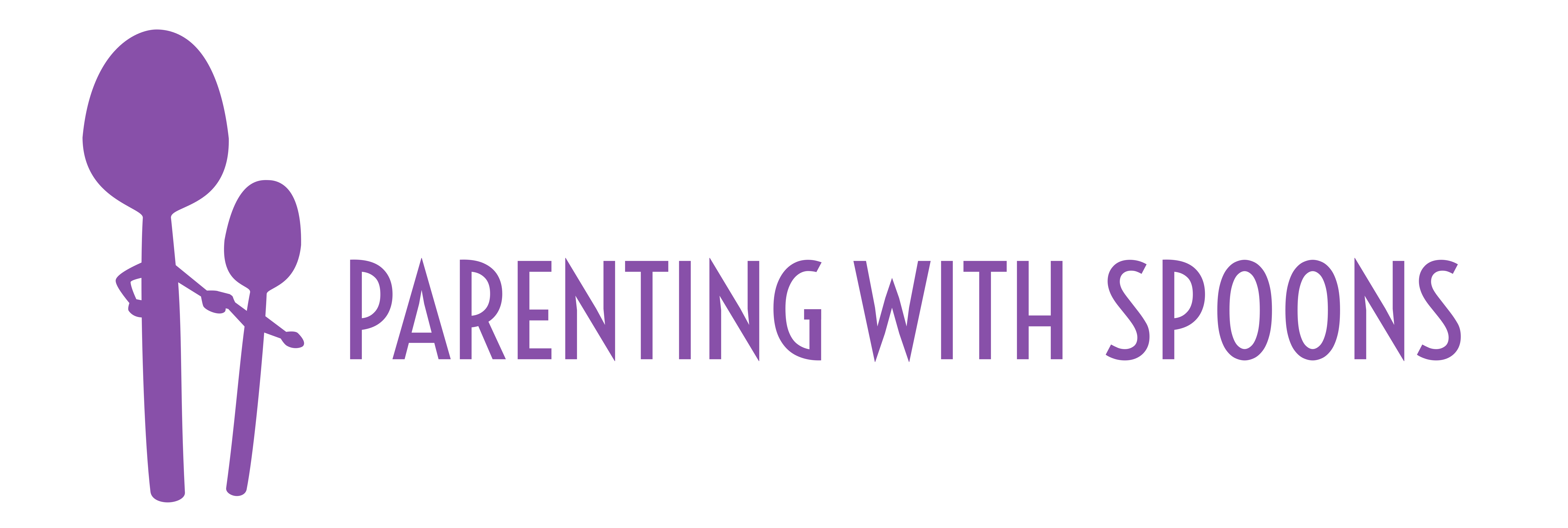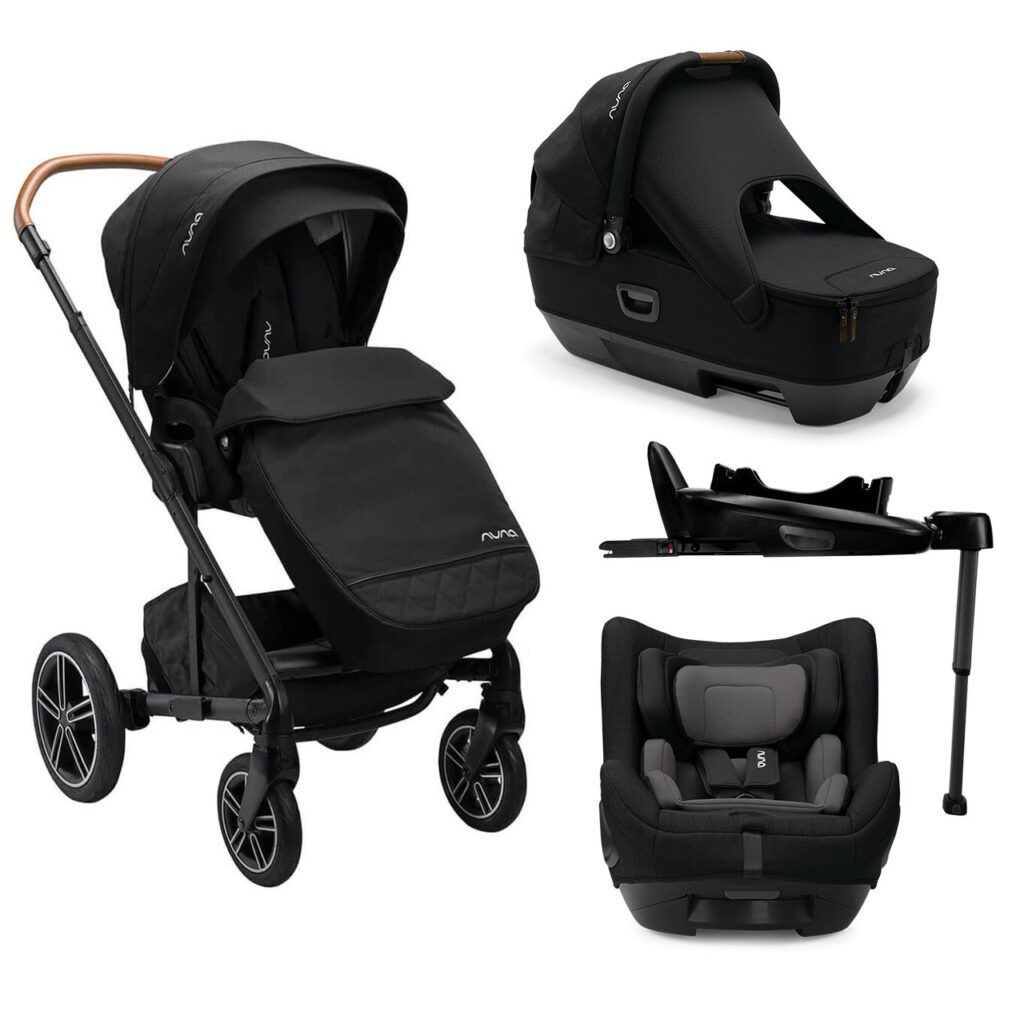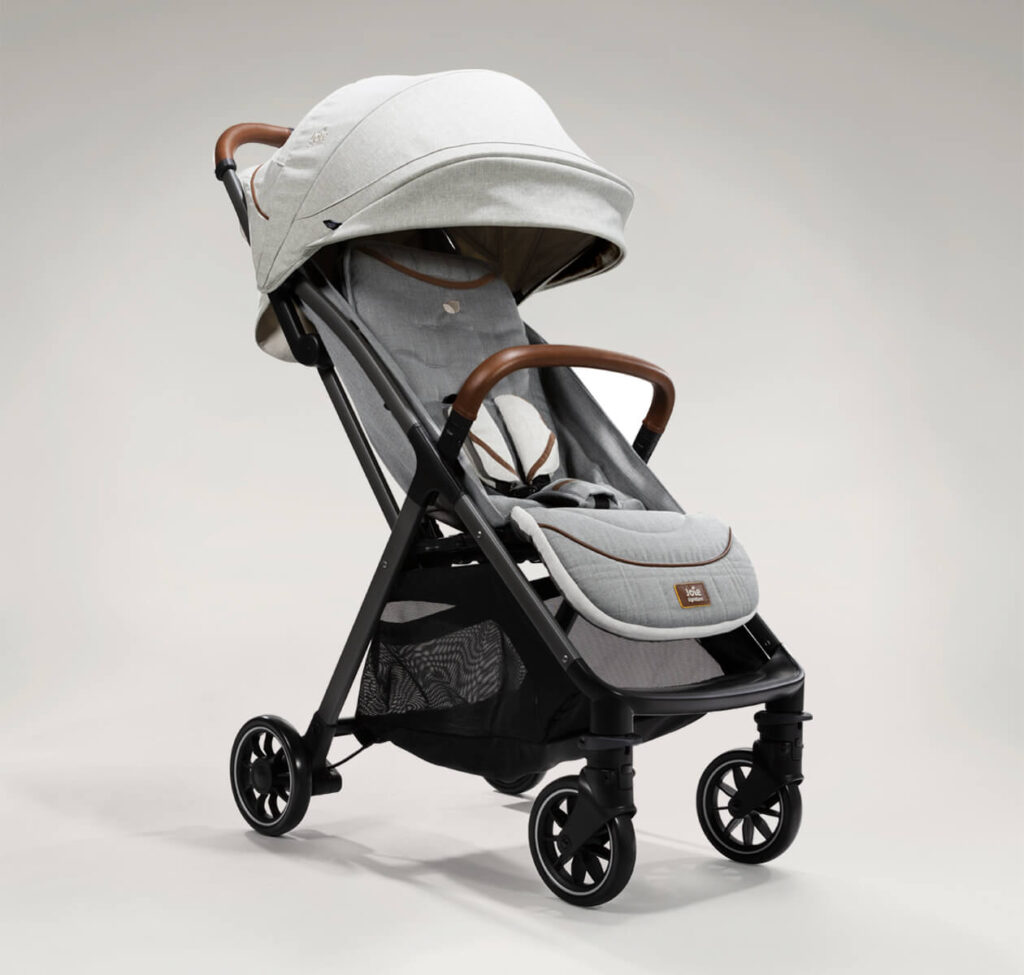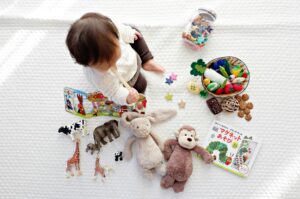As a parent living with long term health conditions – when pain and tiredness are involved – how you transport your baby from place to place matters. I will write at a later date about car seats, which are a minefield in themselves, and slings and carriers. Today, I’m looking at prams, pushchairs and buggies (which may all be different names for the same thing).
We were seriously guided by review websites when we chose our buggy and although it has been great, there are a few things I wish we’d known before we made our choice. So that’s what I’m sharing with you here.
This post is not sponsored and these thoughts and opinions are entirely my own, though I do include links to brands and pushchairs.
As always, please let me know your thoughts, even if you completely disagree with me! I’m only writing from my perspective, with my conditions. If you can provide another perspective, please do! You can comment below or get in touch with me here.
For a full list of the things you need for a new baby, have a look at my post here.

Do I need a pram, buggy or pushchair?
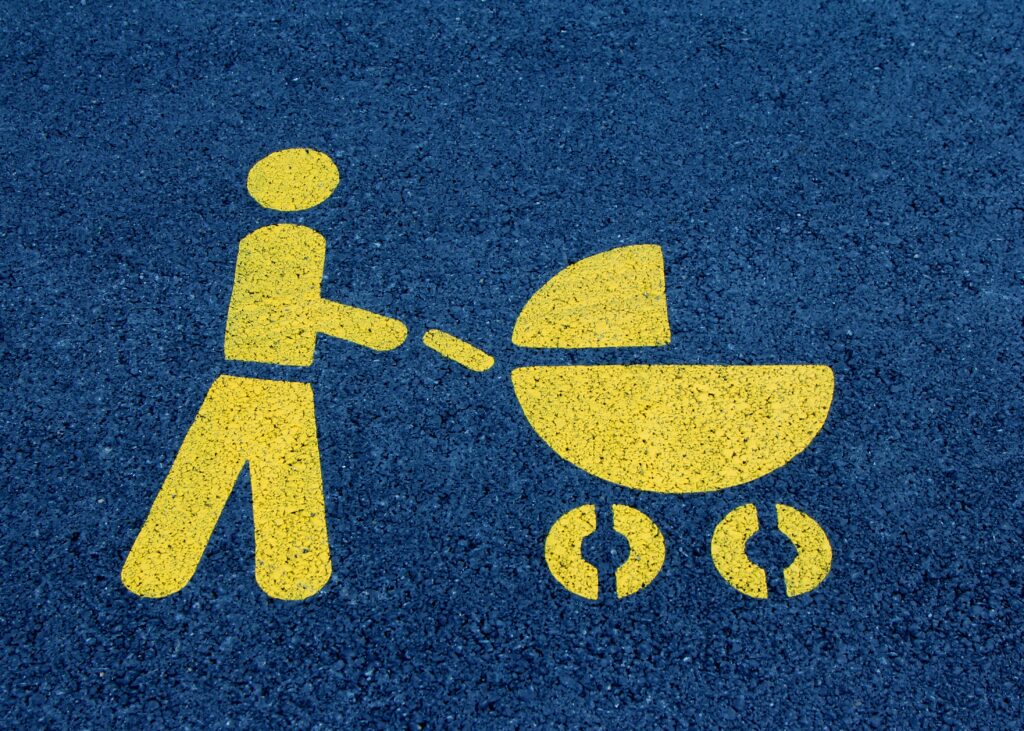
And so it begins. The problem is that these names are often used interchangeably, though they can mean slightly different things. My understanding is that a pram is more like the bassinet or carrycot style you would use for a newborn, and a pushchair is for an older child and can also be called a buggy. You also hear about strollers, which I think is an American term for the same thing.
A pram consists of a carrycot for a newborn (also known as a bassinet) on top of a base.
A pushchair has a seat for a baby or young child, which may last up to about 4 or 5 years old depending on its weight rating. Some of these can lay flat for a new baby.
In essence, you need a 3 or 4 wheeled device that can lie flat for a new baby. Newborn babies should lay flat for sleeping, so without this feature they can’t sleep in the pushchair (which they often so love to do).
Later on, they can sit more upright, though the ability to lay them down can still be handy for on-the-go naps.
A note on carrycots: if you have a baby who suffers with reflux, some carrycots can incline slightly so that they are not completely flat to help reduce this. I’m not a doctor, so you may wish to check with your GP about doing this!
All of these features are normally now found in one set of equipment called a travel system, with detachable or adjustable parts.
Lots of new parents choose to buy a travel system. This would often include a pushchair, a bassinet (carrycot), a car seat with isofix base and adaptors to fit it to the buggy and perhaps extras such as rain covers and foot muffs. We bought the Nuna Mixx Next travel system (pictured below).
We have generally found our pushchair to be great – it has an adjustable handlebar, it’s reasonably easy to clean and it has fit our little girl well from birth. The seat can parent-face or world-face, although the buggy only folds in world-facing mode. The spinning car seat was a huge help during the newborn stage and the carrycot is reasonably bulky but can double as an overnight bed occasionally which was great for nights away visiting family.
But there are a few things I wish we’d considered, particularly considering my health.
I recommend trying out pushchairs if you possibly can. Borrow them from friends or visit a shop like John Lewis that has a range to look at in store.
Things I wish I'd known about pushchairs
These are split into two categories: things that are generally useful to think about, and things that particularly affect spoonies.
Firstly, I sometimes regret the enormous cost of our travel system. It was by far our most expensive baby purchase. For context, at the time we made the purchase I was almost 6 months pregnant and we were dealing with a challenging family situation. I hadn’t bought a thing for the baby and just wanted to start getting things sorted. So we took a trip to John Lewis and by the end of the day we’d bought a moses basket, bedside crib and the travel system.
My husband enjoyed buying the pushchair – he’s a car enthusiast and trying out a mini engine-less vehicle with four wheels and a seat appealed to him. We were pleased to have finally made some steps towards getting ready for our baby. However, looking back, I think we could have saved money by buying second hand or shopping around more. For example, the carrycot was brilliant but not 100% necessary (some friends of ours didn’t get a buggy with one because theirs lay flat enough for a newborn anyway). We could have just bought the pushchair and a separate car seat, rather than being enticed by the travel system bundle.
There were a few things that encouraged us to believe we were making the right choice. We were heavily guided by well-known review websites and forgot that they don’t cover all the options and reviews are not always up to date.
The marketing got us too. For example, the Nuna comes with an Isofix base that is compatible with the next size up car seat. This made it sound like an incredible saving. However, we didn’t end up getting the next stage Nuna car seat when baba outgrew her infant carrier. In any case, most car seats come with a base as part of the package, so it wasn’t really a saving.
But the biggest thing I wish I’d known is that one buggy cannot do every job. This is actually great to bear in mind for baby things in general. Trying to save money by buying things that promise to last forever and tick every box often ends up with products that cover a lot of bases, but don’t cover most of them very well. There’s always a compromise somewhere.
Our pushchair is great for walks around our house (we live in a rural village so this includes pavements but also a field and some tracks). It can be used parent-facing when baby is smaller or if you want to be able to see them and interact more. It also flips round so baby can see the world once they’re a bit older. It seems to be comfy on lots of surfaces. Folding it up (once past the carrycot stage) is easy and it fits in our car though it is quite wide.
However, despite it being one of the lighter full-size pushchairs, I really struggle to lift it in and out of the car. Often I’m taking our daughter out while my husband is at work, so this is a job I have to do on my own (with a toddler in tow). In fact, it became so difficult for me that I would choose to have baba in the carrier (which became increasingly heavy) instead of dealing with the buggy.
In the end, about 6 months ago we bought (or rather were gifted by my parents) a second, lightweight buggy. And all of a sudden things got so much easier. It weighs half as much, it folds up quickly and can be carried in one hand. It fits easily in the car, so no extra energy expenditure trying to squeeze it in around all the rest of the baby and dog stuff. It was a huge relief to be able to go out on my own with my little girl again, without dreading the pushchair situation. It lives in our car now and we use the Nuna for walking from home.
The lightweight buggy is admittedly not rugged. You wouldn’t want to take it on a hike (not something I find myself doing anyway!). The basket is small (although the Nuna’s isn’t enormous) and it will tip over if it’s empty and there’s something heavy hanging on the handles. The sunshade doesn’t cover baba very well, especially when she’s laying down.
But, it does the job it does very well. The lesson here is that no pushchair is perfect, and no pushchair will be able to provide everything you seek for every situation.
If you live in a flat without a lift, you may want a lightweight, one-handed fold buggy. If you’re active, you may want a three-wheeled buggy designed for running or hiking. If you travel often look for something that folds down to cabin size. If you go for country walks, you’ll need something with robust wheels and suspension. If you’ve got more than one child or are expecting multiples, that will change the style you go for. And if you want to do more than one of these things, you may need more than one buggy.
If you’re a spoonie like me, consider what will help ease your stresses and pains. What do you need to preserve spoons?
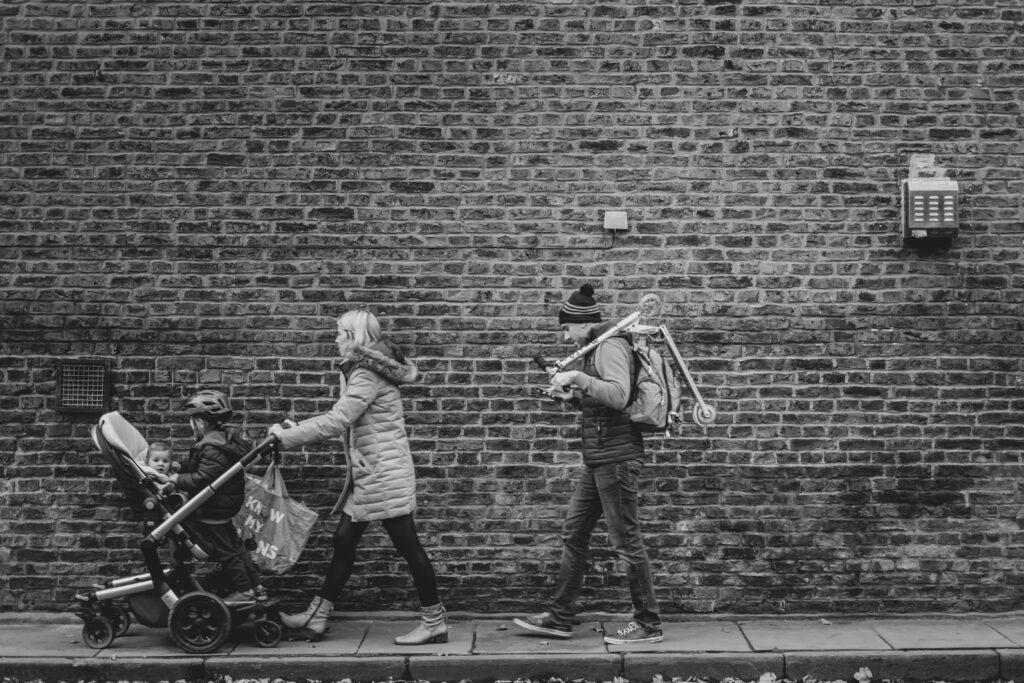
Everyone is different and you know your health and family situations best. But here is my list of things to think about when you’re choosing your pushchair.
Once you’ve chosen, shop around for a good price and good customer support.
So what should I consider when sourcing my pushchair?
- What surfaces will you mostly be travelling on?
- Do you want/need a travel system with carrycot and car seat, or just the pushchair?
- How large and heavy is the buggy?
- Will the buggy fit in your car, house, flat?
- If you use public transport, will it lift easily onto a bus or train?
- Does the handle adjust? This is important for ergonomics
- Is the basket big enough and easily accessible?
- Does the seat parent-face and world-face? Is this important to you?
- Is the height and shape compatible with all carers (who may be different shapes and sizes)?
- How long will you use each component for?
- Does it have single-handed steering? (Two handles makes this difficult)
- Is car seat compatibility important to you?
- What weight and height limit does it have? Will it last long enough?
- Does it make you happy? If it's important to you, is it a style you like?
Popular pushchair brands
I haven’t tested any buggies that I don’t own, so I’m not going to make recommendations here, just suggestions of brands and buggies I’ve come across on my research travel. If you’re lost and don’t know where to start, here are some brands to consider. (This is by no means an exhaustive list!)
Nuna (we have the Mixx Next)
Joie (the sister company to Nuna, we have the Joie Signature Parcel lightweight pushchair)
Mamas & Papas (the Ocarro is popular)
BabyStyle (take a look at the Oyster3)
Bugaboo (a few options, a friend of a friend has the Fox but I’m told access to the basket is tricky with the bassinet on)
Silver Cross (lots of choices here from a classic and popular brand)
Uppababy (I hear about the Vista most)
Babyzen (make the YoYo2, perhaps more of a city buggy)
iCandy (the Peach is popular and available as a double or twin buggy)
Out n About (I considered the Nipper for coping with bumpy terrain)
Cosatto (the Woosh3 is an affordable, compact buggy)
So how do I choose one?
I would recommend making a list of essential and desirable features, and deciding a budget.
Then, look through the available buggies (or pick a few to avoid mental overload). Dismiss those that don’t meet your necessary criteria, but consider those that meet these but don’t meet all the desirables. Remember, you may be looking at a combination of two pushchairs (or perhaps one with a sling or carrier) to meet all your needs.
My list now would look like this:
Daily buggy:
Essential: fits in the car, adjustable handles, good size basket that is easy to reach, good sunshade that covers baby well, easy to adjust, lie flat (if expecting a baby)
Desirable: reasonably lightweight, free-standing when folded
Travel buggy:
Essential: one hand fold and steer, can carry with one hand, very lightweight, adjustable seat, decent basket, good sun coverage
Desirable: ability to lie flat for a new born, robust enough wheels for tracks and gravel
Try them out if at all possible. This is one of the most physially significant purchases you’ll make for your baby (and one of the most expensive too). Trying it will hopefully avoid you buying anything that will use too many spoons by causing you fatigue or discomfort. Try folding them, swapping the seat and carrycot, fitting a bag in the basket (this is one of my most uncomfortable buggy related tasks) and putting it in the car.
There you have it. My wisdom – for what it’s worth – on buying a pushchair as a spoonie.
As with all things, our needs are individual. But I hope this helps guide your thinking and clears up some misconceptions. If there’s anything you’d like me to elaborate on, correct or discuss, please comment below or get in touch with me via email.
Spoonfuls of love,
Emma
